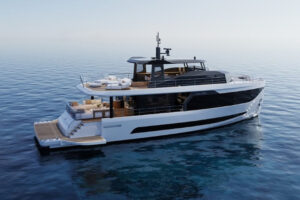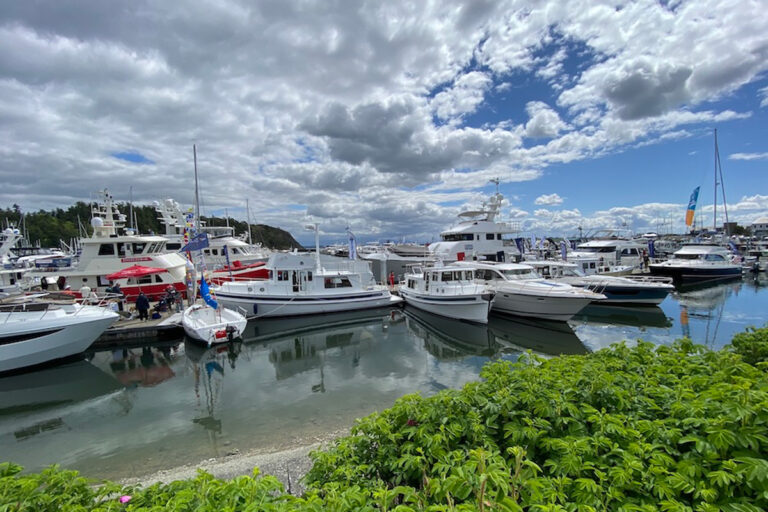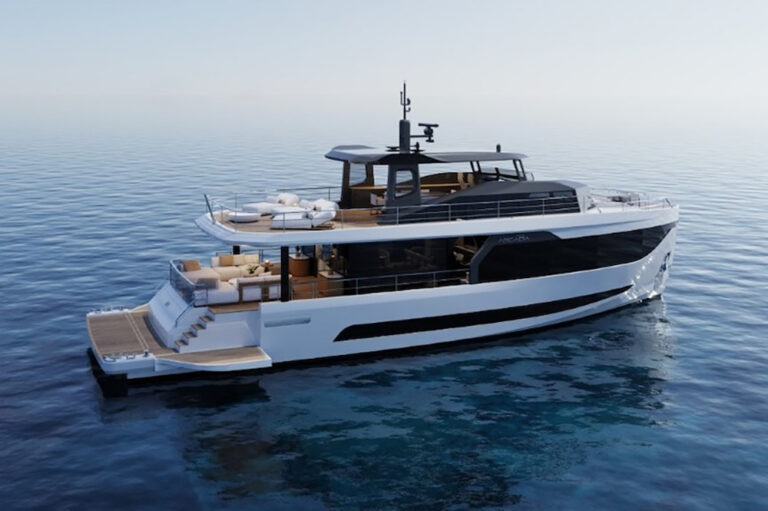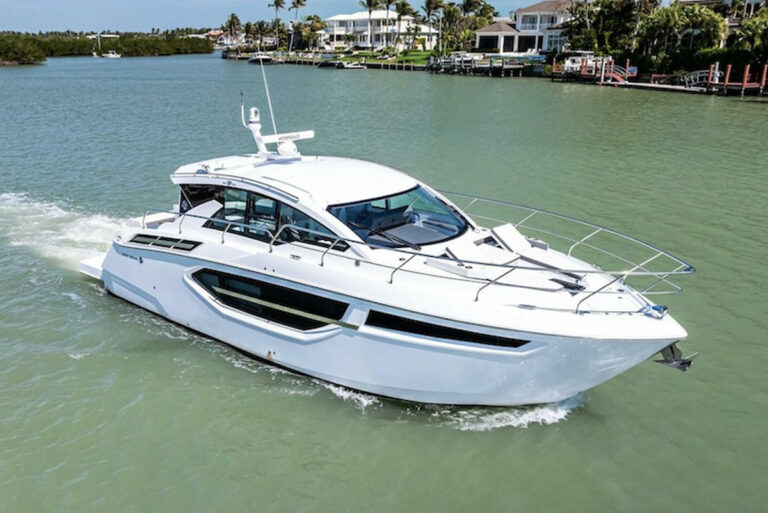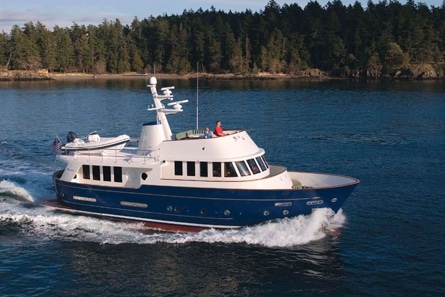
Queenship445.jpg
I have a rule that I’ve tried to keep sacrosanct throughout the decades of my boating life: I only want to own pretty boats. Oh, I’ve had my share of plug-uglies, usually because they had some special trait, such as being blindingly fast on the race course or having an unbelievably low handicap rating. By and large, however, I can look at the pictures of my favorite boats-the ones I wish I’d never sold-and appreciate their beauty. I even have a rating system for them.
It’s the Caswell RAF, or Row-Away-Factor.
As I row away from my yacht in an anchorage (rowing a tender dates me, doesn’t it?), I might stop to lean on the oars and admire my yacht. That’s an RAF of 1. If I stop two or three times, perhaps saying to myself, “Damn, she’s the prettiest in the cove,” well, those stops just add to the RAF.
Here’s the point: The new Passagemaker 60 would have a very high RAF if she were my yacht. In fact, I might never get to shore because she’s just so nicely proportioned. The sweep of her sheer is just right-not too much, not too little. The house is centered where it should be, there’s enough canoe stern to balance the foredeck, and the Portuguese bridge just adds a touch of saltiness. She’s what old sailors like me would call “yar.”
The story of how the Passagemaker 60 came to exist is a winding tale worthy of retelling. In fact, just as the credits for a movie about Jason Bourne might have a line saying “Based on a character by Robert Ludlum,” the brochure for the Passagemaker has a similar credit: “Original Concept Design: Vincent A. Mausset.”
Mausset, a yachtsman and sometime sports-car racer who lived in Hong Kong, had come up with the idea of a “gentleman’s yacht,” the concept for which he had turned into a design by S&S and then an actual yacht by Halvorsen Marine.
It was, as they say, close but no cigar. The idea was good, but the yacht came off looking a bit stubby, the interior was busy, and the absence of a swim platform on the canoe stern discouraged some buyers.
The design languished until Dan Fritz, the founder of Queenship Marine in British Columbia, was casting about for a project. Liking the basic lines, he cut a deal with Mausset to take the concept back to S&S, which stretched the yacht to 63 feet. Fritz then formed Sea Spirit, a consortium working through Queenship to launch the Passagemaker series that will eventually include 51-, 75-, and 88-foot versions.
Her tradename aside, this is a passagemaker. S&S created a hull much like a sailboat, with a long keel and a bulbous bow that increases the hull speed. With a husky shoe on the full-length keel to protect both the prop and the rudder, the 60 is ready for adventure.
Standard power is a single 340-horsepower Lugger, which gives her a top speed of 10.75 knots and, on the standard 2,105-gallon tankage (10 percent safety margin), a range of 3,000 nautical miles at better than nine knots-even with a generator running. That tells us that S&S designed a very slippery hull that moves easily through the water.
Because there are several alternative arrangements available for the Passagemaker 60, decisions had to be made early in the construction sequence and I think the owner of hull number one, Ed Koethe, made good choices. First, and most obvious from the exterior, was the widebody layout which eliminates the portside deck to create a beamier salon and galley. In most cases, you won’t miss the deck because you’ll be docking starboard side to, and the extra space in the salon is valuable.
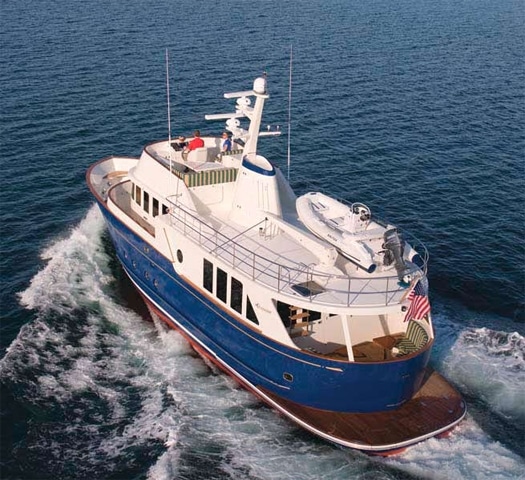
| | |
Having a canoe stern cuts down on the after deck, but there are a pair of settees with tables, separated by a dogging centerline transom door to the swim platform. Inside the salon, Koethe opted for a desk in the after starboard corner and, if you have to work aboard, this is a pleasant spot with a good view and space for a computer and papers. He also chose loose furniture-a couch and lounge chair-rather than builtins. While a number of woods are available, the Koethes picked a tightly grained teak that has a yachty look.
The galley is deep and U-shaped, with a breakfast bar separating it from the salon, and there are the usual appliances from GE, plus black granite counters.
Up three wide steps is the pilothouse and, oh, be still my heart. This is a dream for an offshore skipper. Two Stidd chairs are behind a wide dash with three Furuno screens and there is a raised console next to the helm seat. Just aft is a raised platform with an L-shaped settee and dining table, and the space under the platform allows for an immense drawer for storing full-sized charts flat. Just behind the settee is a wonderful pilot’s berth so an off-duty companion can be nearby on long watches.

| | |
The master suite spans the full beam aft of the foyer (with its concealed washer/dryer stack) and, here again, there were choices to be made. The Koethes layout puts a love seat to port and a vanity to starboard. There is a centerline king-sized berth with drawers and bins underneath, twin hanging lockers, and a spacious head with granite counters and full-sized shower with seat.
Easy stairs lead from the pilothouse to the bridge which is well forward. A pair of helm chairs are behind a fiberglass dash that duplicates the lower helm in electronics, and an L-shaped settee adjacent to a wet bar completes the bridge. That yachty funnel hides a pullout Vermont Castings barbecue. The electronics mast is hinged so Koethe has the 20-foot clearance needed to transit the Erie Canal.
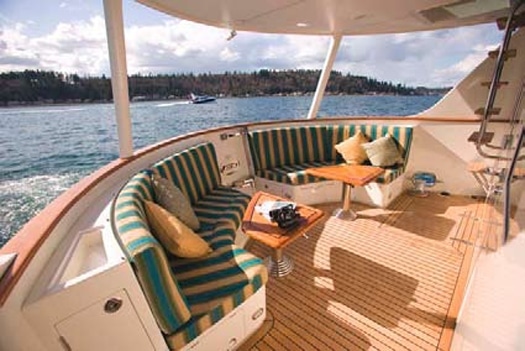
| | |
If you haven’t been aboard a large single-engined yacht, the engineroom will come as a surprise, because those second engines sure take up space. On the Passagemaker, you can walk completely around the main engine (protected by stainless steel rails), which is a mechanic’s delight. Ed Koethe selected a pair of 20 kW Northern Lights gensets, both of which have power takeoffs that run the Sidepower thrusters, the Wesmar stabilizers and, of course, either generator can power the Wesmar get-home drive.
There are too many niceties in the engineroom to mention, but I was impressed by the husky Y-valve bilge pumps, the Aquadrive flexible shaft coupling (to suppress vibration), and the manifolding that allows changing filters without shutting down the engine. All of the powerplants are on isolation mounts, and considerable effort has been spent to make this a quiet and vibration-free yacht, including Quadzero foil noise barrier.
A watertight door leads to the lazarette, which houses the hydraulic steering, a 50-amp Charles Industries Iso-Boost transformer (dock power to 240-volt AC) and a 4,000-watt Xantrex/Trace invertercharger. There are four shorepower inlets (two each fore and aft) served by a Glendinning Cablemaster.
The Passagemaker 60 is built in China to high standards, with solid laminate below the waterline and vacuum-bagged Corecell in the topsides and house. There is no wood in the stringers or transverse framing, which are top-hat sections with foam cores.
It is abundantly clear that Sparkman & Stephens and Queenship have created a winner with the Passagemaker 60. She’s seamanlike, nicely arranged, and impeccably built.
Best of all, she’s just pretty. I’d give her an RAF of 5.
West Coast: West Coast Passagemaker, (604) 512-1107; East Coast: Sparkman and Stephens, (212) 661-1240; Queenship by Sea Spirit, www.seaspirityachts.com.


